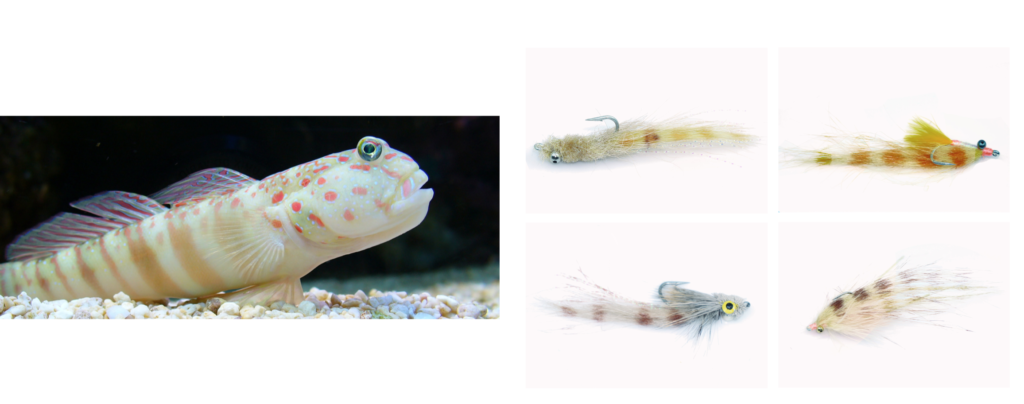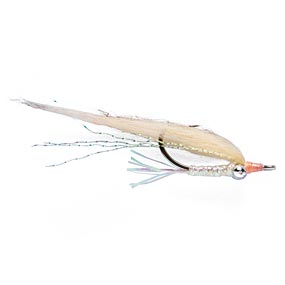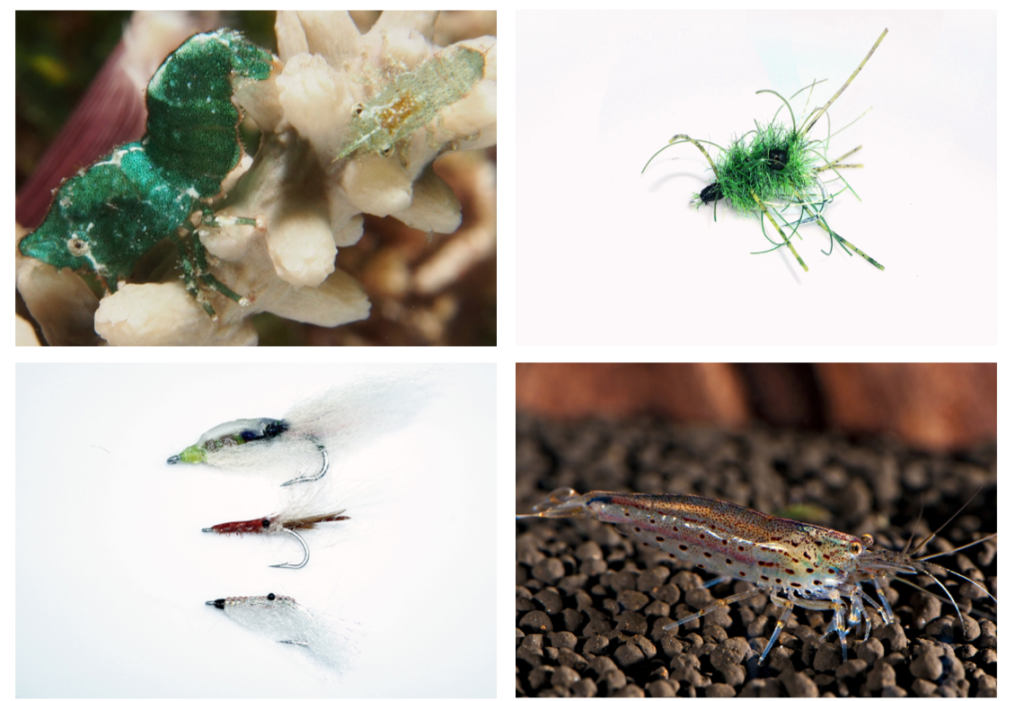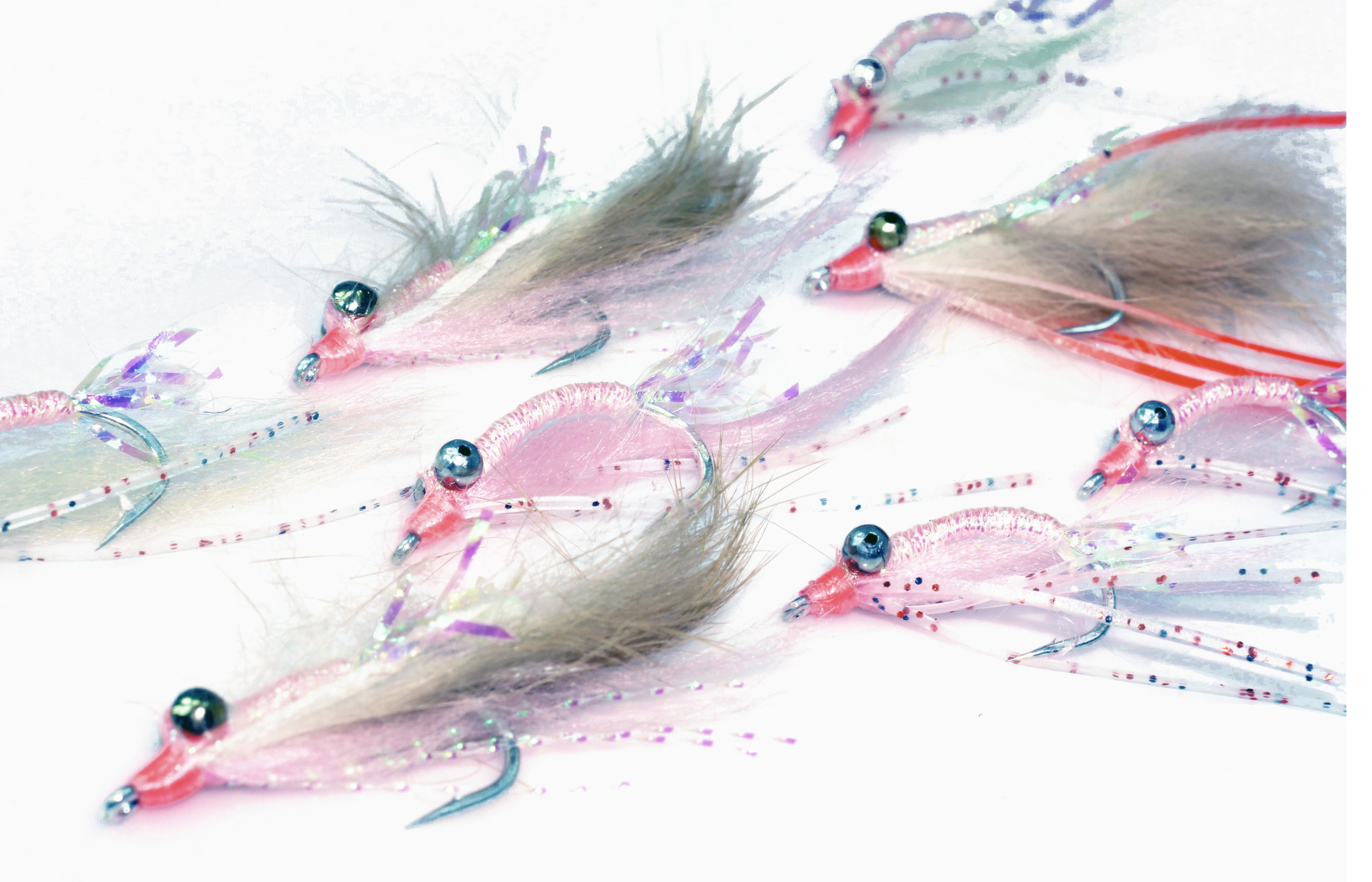It is not a big secret that bonefish and permit sustain themselves by feeding on crustaceans on the flats. With over 8.5 million known species that inhabit the earth, it’s a dizzying task to even try to understand what species thrive where and why. Finding a fly that will entice what every fly fisherman seeks—“the eat”— often begs the question…why? Why certain patterns work, where they work best and the biological traits that they mimic are all questions that will serve the curious angler. After years of study and multiple visits to fishing destinations all over the world, we have barely started to scratch the surface in terms of the possibilities.
A daunting task I know, but breaking it down by ocean, reef system and even location, one can begin to discover why some patterns outperform others and even start to think about creating new patterns. This is the art and the science of fly fishing and one must be knowledgeable in both to be successful.
On any given Caribbean island there may be 50 or more species of invertebrates including crustaceans that serve as prey. Unless you are a marine biologist (yes, like Dr. Adams), it is almost impossible to fully understand the life cycles and stages of each one. However, having some knowledge of yearly hatches goes a long way. For example, since Gotchas work in the Bahamas on bonefish, we can reverse engineer our understanding, so to speak, to figure out what we have copied in nature that works so perfectly as an organism. By reflecting on these designs, anglers can better understand why a certain fly draws strikes.
A few fundamental principles for understanding prey behavior include:
Certain micro-environments in which individual species thrive are not always consistent across latitude and longitude lines. Many habitats are created by tides and light and may be also be influenced by symbiotic relationships with other sea life.

Despite the cloning phenomenon that occurs across almost every species (e.g. all stone crabs look exactly alike) each life form goes through a set life cycle with highly variable appearances at different stages. Depending on when and where each cycle occurs, this will dictate whether or not a specific pattern will imitate the local prey. If the target species is eating small shrimp larvae at a given location, it would be futile to toss a spawning shrimp or other definitively adult imitations. Each pattern must match the appropriate size as well as the correct color requirements of a particular forage species in order to be productive. Yes, there are size variations within species but it is minor. Flipping a 3 inch fly to fish that are eating 1 inch prey will likely spook them. The pattern must be used in the correct habitat where that prey species can be found. If the target species is eating shrimp, don’t throw a crab pattern out there. Again, this will create an unnatural situation and most definitely alert the fish.

Hey! I just want to fish. We know; we feel the same way. But, if an angler spends meaningful time researching and preparing gear such as rods, reels, lines, leaders, tippet and clothing then an angler should perhaps understand
the target gamefish’s main food sources and habitats. This information will serve you better than even the best hand tied leader or even the smoothest casting line you can find.
There are three major reefs of interest to fly fisherman in the Caribbean: the Great Florida Reef, the Great Belizean Reef and the Andros Barrier Reef. After the Great Barrier Reef of Australia, the Great Belizean reef is the largest coral reef in the world. The Great Florida Reef is the third largest while the Andros Barrier Reef is the sixth largest.
This begins to explain why the fishing is world class in these locations. Life begets life! A healthy reef produces a healthy environment for reef fish, corals, sponges, worms, crabs, shrimp and lobster which in turn bring larger predators to feed. Ultimately, predatory fish such as barracuda, jacks and sharks serve as apex predators. It all starts with a healthy ocean but that’s an entirely different topic, so I’ll dust off my soapbox later.
The reef is the foundation for life. It may consist of rock, coral or just sand at or very near the surface of the water. The Florida reef is unique as there are two distinct parts, the upper keys of Biscayne National Park and the “true” keys that are aptly named the Florida Keys. What differentiates the true keys from the rest is the age of the coral formations which created them. The true keys are ancient while the others are much younger, hence the delineation between the two sets. Micro-environments within reefs can be easily identified with basic observation. For example, when your guide poles you over a large white sand flat into an new area flanked by mangroves, you have just changed microenvironment. In the sand, you will find burrowing worms and shrimp, gobies and certain types of small crabs and baitfish, while the mangroves may serve as habitat for a completely different mix of prey species.
The astute angler will quickly change the fly to perhaps a lighter or non-weighted pattern that will hover suspended or something heavier that might have more color. Take a minute to observe the surroundings before saying “this looks fishy” and think about what might inhabit the area.
While many micro-environments have similar species, some do not. For example, on the Great Belizean Reef near San Pedro, Belize, the bonefish feed along the beaches in very dense, lush eel grass. One would think a brightly colored fly might get their attention but what actually works is the exact opposite. They are feeding on tiny grass shrimp and rough back shrimp, Trachycaris rugosa (this is the basis for the San Pedro Crab, which is actually this shrimp). Try fishing the green fly on the sand flats, and again they are gone. The habitat is completely different and what worked in the grass does not work in the sand. Another very plentiful crustacean is the grass shrimp which is perfectly imitated by the Alberto’s shrimp pattern. Couple the micro environments with the life cycle of the species, time of year, throw in weather conditions, tides and you have a lot to know. The next segment focusing on The Florida Reef, The Great Belizean Reef & The Andros Barrier Reef will further demonstrate how species life cycles within certain microenvironment can change the way you think about your fly selection. Here’s some food for thought: Most of my “big bone” flies are shrimp patterns but there’s a reason why some work better than others. The Gotcha for example is a shrimp pattern that has been a staple in the Bahamas for decades. Is it really a shrimp pattern though? You probably have never considered that there are a dozen different goby species around. Gobies are small fish that burrow and they are best described as a short tapered fish that are essentially a less evolved form of mudskipper. They sometimes live in symbiosis with the “Some of the best shrimp patterns really owe their success to color and movement rather than pure imitation.” snapping shrimp (also known as the pistol shrimp) in the same burrow and serve as a bulldozer and early detection system for the shrimp.

How about shrimp patterns that more accurately represent shrimp specifically? There are plenty of these that are relevant to the Andros Barrier Reef. Some of the very best shrimp patterns really owe their success to color and movement rather than pure imitation. Consider the Pink Wiggler and the Pink Puff which imitate Ancylomenes pedersoni, a small cleaner shrimp. Sometimes when fishing adjacent to the reef, some of the cleaner shrimp and other smaller species will end up in seagrass or on the characteristic white sand flats of Andros. When fishing a pink wiggler, your guide might say “leave it, strip, stop, bump it twice.” This typically emulates the movement of smaller shrimp like Ancylomenes. The banded coral shrimp is another very common species and we like to refer to him as the all American shrimp because of the red and white stripes with blue shoulders and belly. Craven’s Bonefish junk mimics this species and several others very well. So if this blows your mind, check back in July for the whirlwind tour of common prey and optimizing your fly selection for Andros, Southern Florida and Belize.


